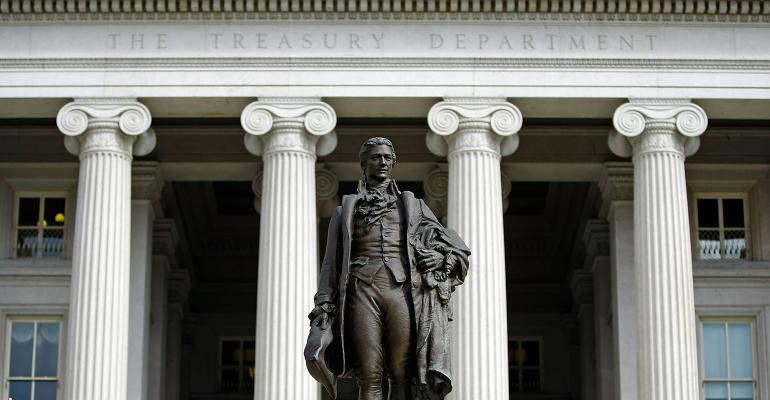By Marcus Ashworth
(Bloomberg Gadfly) --Bond traders have been absolutely riveted to the U.S. 10-year and it's hair-raising creep to 3 percent.
While that note's not exactly a sideshow, they should really be diverting some of their focus to the 30 year.
While both securities have risen 50 basis points this year, the 30-year is now within touching distance of highs reached in 2015, 2016 and 2017. This 3.24 percent level is the dividing line between a fairly orderly bond sell-off and a proper rout -- the latter has the capacity to spill over into stocks and even potentially signal a credit crunch.
But before we get to bondageddon there are some reasons to hope that, at least initially, the march higher in yields might take a breather.

Investors are digesting $258 billion of Treasury bill and bond supply this week, culminating in Thursday's $29 billion seven-year auction. Normally, once a hefty belt of issuance is out of the way the market often retraces to lower yields.
Month-end is approaching, when many funds rejig their asset allocation between stocks and bonds. This should benefit fixed income this month as it has been the clear underperformer. Barclays Bank analysts point out there is a large duration jump in most key U.S. Treasury indexes at the end of the month, which should spur more buying than usual at the long end to make sure funds maintain their maturity targets.
Japanese politics are also an important force. Koichi Hamada, policy adviser to Prime Minister Shinzo Abe, said Thursday the Bank of Japan should consider buying foreign bonds, according to Reuters. While this idea has been kicking around for some time, that it's even reached the proposal stage is a clear sign that the stronger yen is worrying Japanese officials.
As Gadfly has pointed out there has been a notable pick-up in liquidation of foreign bonds, largely U.S. Treasuries, by Japanese investors hurt by the double whammy of rising yields and a falling dollar. A stampede back into domestic government bonds ahead of their financial year-end would further strengthen the yen.
Official guidance might strongly influence how Japanese funds rearrange their portfolios. This new mood music among key government advisers may well counteract what would otherwise be a sensible preference among investors for paring U.S. exposure now, not to mention staying away from U.S. debt once the fiscal year starts again.
All these factors may not be enough to stop a powerful trend towards higher yields as the Federal Reserve maintains its hiking policy, but it might prompt a brief respite from the one-way traffic.
This column does not necessarily reflect the opinion of Bloomberg LP and its owners.
Marcus Ashworth is a Bloomberg Gadfly columnist covering European markets. He spent three decades in the banking industry, most recently as chief markets strategist at Haitong Securities in London.
To contact the author of this story: Marcus Ashworth in London at [email protected] To contact the editor responsible for this story: Jennifer Ryan at [email protected]





